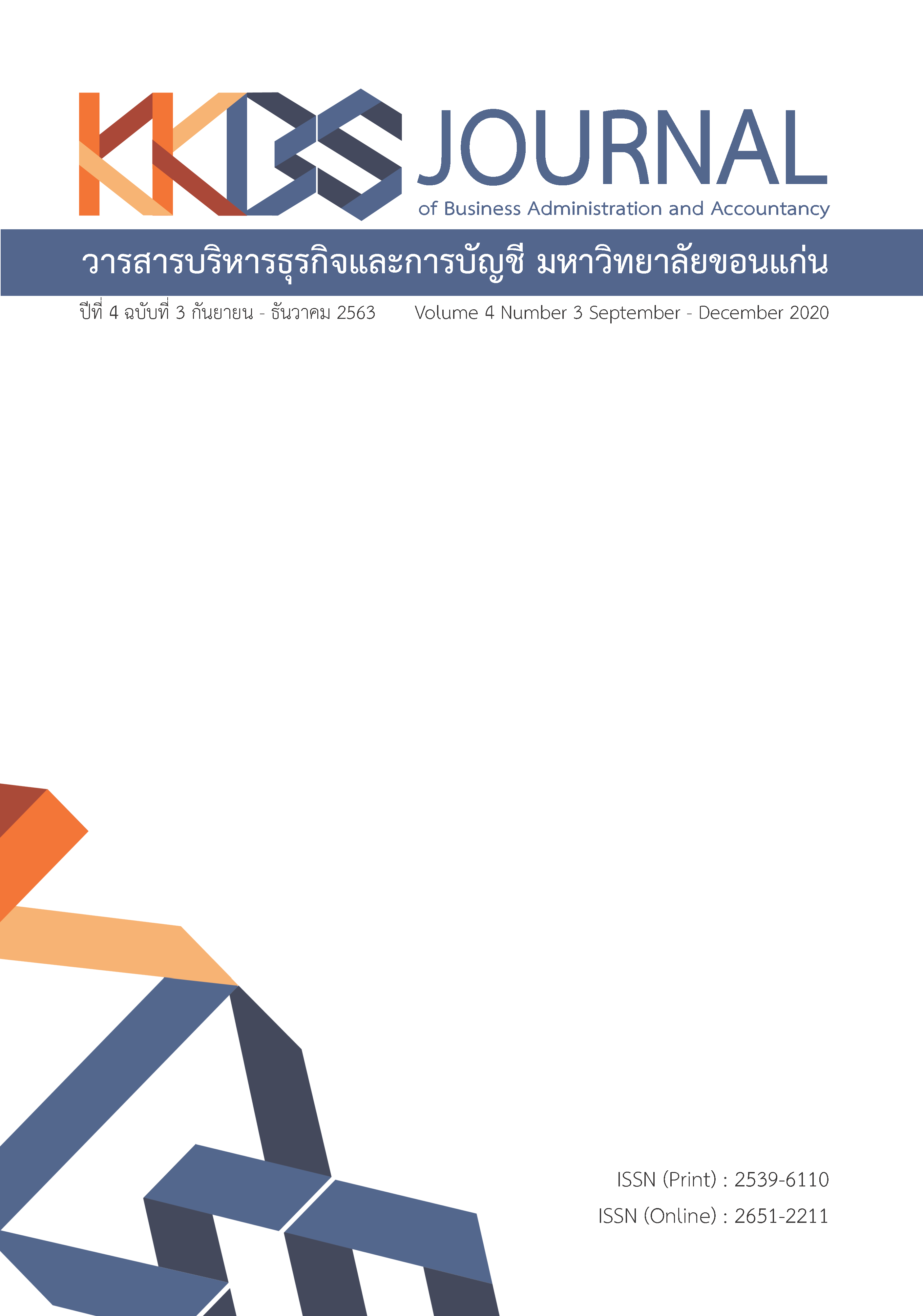Quality of Earnings and Operating Efficiency of Thai Commercial Bank
Main Article Content
Abstract
This study is aimed to analyze Quality of Earnings (QE) and Operating Efficiency (OE) of 13 Thai Commercial Banks. Data were collected from annual performance summary reports for a decade since 2008 through 2017. Those data are statement of financial position, income statement, statement of cash flow, and note to financial statement. Other sources of data are books, journals, e-journals, which revealed to the public published. Financial ratio is used to analyze include statement of cash flow and consolidate financial statement for QE and OE using statistical program to investigate correlation coefficient between QE and OE. The result found that most of commercial banks got the positive figures of the average of QE and OE. It explicitly indicates that the status of earning is in good criteria and good operating efficiency. Both of QE and OE are relate together in same direction with very low positive correlation coefficient. There are 2 prediction variables, the ratio of operating efficient to current liabilities and the ratio of cash flow to revenue interest and dividend, are significantly correlates at the level of 005. It explicitly indicates that quality earning reflects by the operating efficiency. The operation efficiency increasing reflects the amount of earnings, that is a quality earning
Article Details
The articles published in the journals are the authors' opinions, not the opinion of the editorial team or administrative staff. The articles published is copyright of the Journal of Business Administration and Accounting, Khon Kaen University.
References
Benchakul, K. (2011). Earnings quality. Retrieved November 10, 2017, from http://www.prosoftwinspeed.com/ArticleInfo.aspx?ArticleTypeID=2230&ArticleID=9336 (In Thai)
Kaewkerd, S. (2014). Earning quality measurement from cash flow analysis of listed company in The Stock Exchange of Thailand, food industry. Phra Nakhon Si Ayutthaya: Faculty of Business Administration and Information Technology, Rajamangala University of Technology, Suvarnabhumi, Phra Nakhon Si Ayutthaya Hantra Center. (In Thai)
Phalalam et al. (2013). The management of the profit quality of the company's cash flow statements on the Stock Exchange of Thailand. Bangkok: Pathumthani University. (In Thai)
Sloan, R.G. (1996). Do stock prices fully reflect information in accruals and cash flows about future earnings? The Accounting Review, 71(3), 289-315.
Sawatrum, P. (2016). Factors affecting earning quality of listed companies in the Stock Exchange of Thailand. FEU Academic Review Journal, 10(1), 143-155. (In Thai)
Sombatchai, P. (2012). Analysis of earning quality and operating efficiency of specific financial institution (SFLs) and commercial bank in Thailand. Pathum Thani: Rajamangala University of Technology Thanyaburi. (In Thai)
Sombatchai, P. & Suthisanont, A. (2016). Analysis of earning quality and operating efficiency of specific financial institution (SFLs) and commercial banks in Thailand. RMUTT Global Business and Economics Review, 11(1), 73-90. (In Thai)
Sritarapipat, O. (2008). Quality and operating efficiency of commercial banks in Thailand. Academic Journal University of the Thai Chamber of Commerce, 28(3), 57-78. (In Thai)
Supalai, V. (2011). The relationship between profit quality and company value. Bangkok: Thammasat University. (In Thai)
The Securities Exchange of Thailand. (2003). Securities analysis based on basic factors. 6th ed. Bangkok: Tewa Creations. (In Thai)
Toommanon, V. (2006). A new dimension of financial statements and analysis. Bangkok: Ionic Intertrade Resources. (In Thai)
Wibunkun, S. (2013). The relationship between earnings quality and operating efficiency: a case study of state owned banks. Khon Kaen: Faculty of Management Science, Khon Kaen University. (In Thai)
Wongphanngarm, B. (1999). The relationship between profit quality and size of commercial banks in Thailand. Bangkok: Dhurakij Pundit University. (In Thai)


